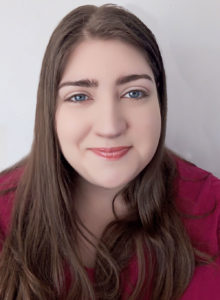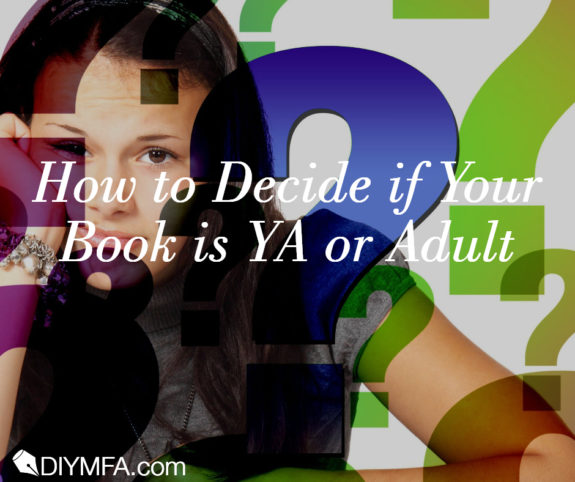Say you have a novel that stars a main character between the ages of 17 and 19, right on the cusp of adulthood. How do you pitch or market it, as Young Adult or Adult? The distinction matters, impacting where your book gets shelved and who picks it up. Readers of each category have certain expectations, whether they themselves are adults or teens.
Here are some signposts that indicate your novel is actually for adults, not young adults.
The protagonists are young, but harsh subjects are on-page
Young Adult books star young adults, with main characters anywhere from 13-18 years old. YA books can feature a wide range of content, including sex, violence, and drug or alcohol abuse. Acclaimed novels like Laurie Halse Anderson’s Speak are all about the aftermath of sexual assault. YA is where kids go to process scary content.
The difference between YA and Adult is how these things are handled. YA isn’t graphic or gratuitous, it skirts the edges of what’s too much. Adult fiction is more likely to depict terrible things outright and even revel in the messiness of it. In some cases the messiness is the point.
Consider the difference between the book and the Netflix adaptation of Thirteen Reasons Why by Jay Asher. The TV series has prolonged scenes showing rape and Hannah’s actual suicide that are absent from the book. The story is all about Hannah and why she chose to end her life, but the book focuses on Clay, Hannah’s classmate who is a remove from Hannah herself. The show splits its time between Clay and Hannah, and delves deep into Hannah’s experience, putting the audience right alongside as she suffers. The book is arguably more YA and the show more Adult. Same subject matter, but handled very differently.
The story is told by an older and wiser narrator
Stephen King’s novella The Body, which was made into the movie Stand By Me, is about a group of twelve-year-old boys who intentionally set out to find a dead body. The story is told from the perspective of Gordie, who’s now an adult remembering what happened.
Because Gordie is reflecting on the past, the story is in past tense, which puts distance between the reader and the story (YA frequently uses present tense for the benefit of immediacy). Gordie doesn’t only tell the incident of finding the body, he also talks about events that happened much later, and the novella includes things from his adult present. These are reminders that the story isn’t happening right now, it’s in the past. This puts still more distance between reader and the now of the story.
Teen readers also don’t appreciate the ‘older and wiser narrator’ when it judges younger characters for, well, being young. Avoid the insertion of the older narrator’s views in YA. Even devices like ‘if only I’d known…’ pull the reader out of the immediate story and imply that the protagonist is acting foolishly. Young readers, especially teens, are often treated like they’re too immature to run their own lives. YA fiction is about providing them with agency.
Your ideal reader’s suggestibility is low
Who did you have in mind when you were developing this story? Were you thinking of teen readers? Did you anticipate what this story would mean for them? If not, you may have a book for adults on your hands.
Teens are vulnerable in ways that adults aren’t. They’re inexperienced, still developing their sense of self, and they have a strong desire to fit in. That means that concepts adults can read, turn over in their minds, and dismiss, may make a deep and lasting impact on a teen reader.
As an example, there could be a recurring element of fat-shaming in a book. An adult reader is better prepared to handle those elements, make their own decision, and ultimately get on with their day. A teen reader will be looking to the book for cues about how they should react in real life. If the fat-shaming is treated as expected, or humorous, and no one challenges it, the teen reader may walk away with the impression that society approves of fat-shaming. This can ripple out in negative ways, from the reader hurting others by fat-shaming them, to internalizing the shaming and developing an eating disorder because they fear being fat-shamed.
Adults are not impervious to suggestion, especially if they’ve experienced trauma, but on the whole, adult readers are better able to handle sensitive material than teens are. That’s why it’s so incredibly important to always write through the lens of a young reader.
Your story isn’t told through a teen lens
A critical lens is much like the lens in a pair of sunglasses. The physical lens tints the way you see the world, making it easier to see some things and others less obvious. Critical lenses are a common form of literary analysis, and they’re a useful tool for writers as well.
To write through a teen lens you have to remember and/or imagine what it’s like to be the character. Who are they? What time period do they live in? Where do they live? How experienced are they?
A good example of different lenses is how sex is written for adults versus teens. In an adult romance novel, sex is on the page to titillate the reader, further the story, and play with tension. The reader is expected to find the sex scene satisfying emotionally, and the higher the heat in the scene the more likely it’s also meant to be sexually stimulating. Erotica is explicitly meant to do so. The readers are presumed to be adults who are seeking these things.
But when you write for teens, your audience has different concerns. Sex is newer for them, it comes with a learning curve, self-doubt, and tangled emotions. A narrative that doesn’t take this into account is geared for adults rather than teen readers.
What if you still can’t decide?
The YA/Adult line is blurry, and you may be advised by an agent or editor to change your book to fit one or the other. You may want to use one of these terms:
Your book may have “crossover appeal”
Books with crossover appeal are of interest to both reader groups. The term is most often used for YA books that adults may enjoy. Publishers like crossover books because it widens the potential audience. Keep in mind that a huge proportion of YA purchasers are adults, so YA has a lot of crossover appeal all on its own.
Your book may be upper YA
YA is informally divided into lower (ages 13-15) and upper (16-18) groupings. Lower YA has more in common with Middle Grade than with Adult fiction. Having an older protagonist will likely put you into the upper YA category. Using this label indicates to agents that you understand the market, and if you self-publish you can sometimes select it as a category to sell in.
Your book may be New Adult
The New Adult designation was proposed as a space for stories about characters 18-25 going through the stuff of early adulthood, like going to college, first apartments, and first jobs. Unfortunately, the market has evolved to mean ‘high heat romance about new adults’, cutting out the other genres that could make use of the term. New Adult as a term has fallen out of favor, but that doesn’t mean you aren’t or shouldn’t be writing it! You may just have to call it something else.
It’s important to pick a designation before you start pitching or selling your indie book, because all readers (including agents and editors) want to know what they’re getting. They want to know that you know what you’re giving them. So make an informed decision and go for it!

Bronwen Fleetwood writes fiction for young adults, and nonfiction for writers. Bronwen studied creative writing at Eugene Lang,The New School for Liberal Arts, has acted as leader of the Princeton Writing Group, and as a Municipal Liaison for National Novel Writing Month. Bronwen currently lives on the Whale Coast of South Africa, between the mountains, the sea, and a lake. You can connect with her at bronwenfleetwood.com.







